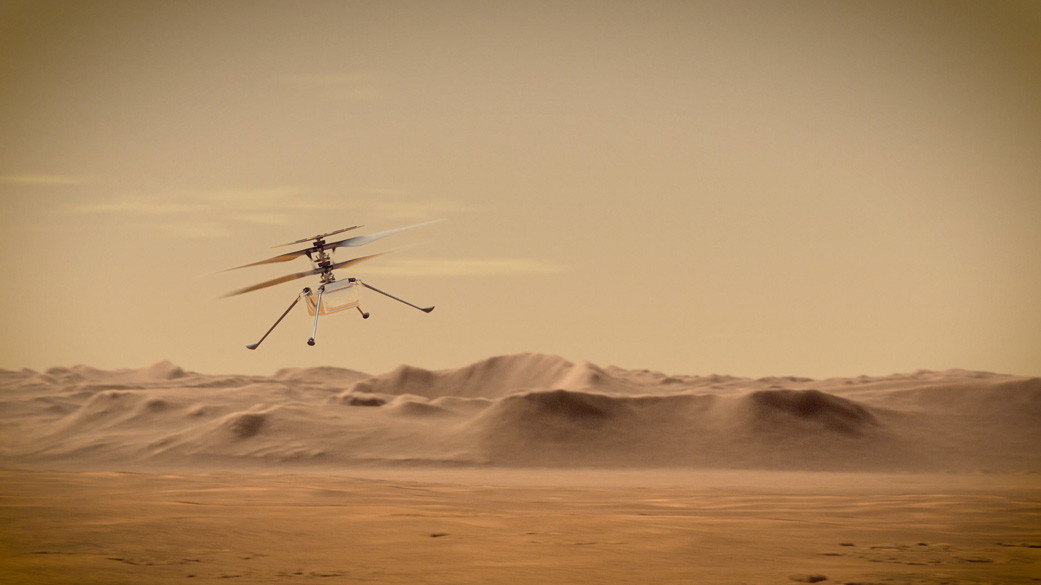4 min read

Much like flying an aircraft on Earth, the weather on Mars is also important for flying Ingenuity. The obvious weather we are interested in could be called Atmospheric Weather, but there is also a different kind of weather we care about – Space Weather, which has to do with the fact that Ingenuity is as much a spacecraft as an aircraft.
Atmospheric weather relates to conditions such as air density at flight time, which affects the thrust that can be produced by the rotor and could result in adjustments of flight parameters. Temperature and wind profiles during the day are used to estimate the energy required to operate heaters. Winds at the time of the flight are tied to risks associated with takeoff, landing, and flying in high winds or very gusty conditions. All the things that a pilot on Earth would care about too!
As with pilots who check the weather forecast before flying, Ingenuity operators also consult weather experts during the course of planning flights and giving the go-ahead for a flight on a day. The weather experts on the team use a variety of models (computer programs that incorporate physical laws that describe the atmosphere) as well as available data from instruments on the rover. The models range from circulation models for the entire planet, to local geographical models that capture local effects at Jezero Crater, as well as more fine-scaled models that capture the effect of the Sun heating the surface and generating local winds. This model information is combined with observations from an instrument on Perseverance called the Mars Environmental Dynamics Analyzer (MEDA), which has a whole lot of atmospheric sensors.
Luckily for Ingenuity, weather forecasting on Mars is in some ways more straightforward than on Earth. The absence of oceans leads to a fairly repeatable pattern and so looking at the weather forecasts and data on the days leading up to the flight informs us on conditions for the actual flight.
Space weather relates to effects of our Sun's radiation on Ingenuity. Everything on Mars, including Ingenuity, is bathed in a background of cosmic rays (high energy particles) from our Milky Way galaxy as well as particles from the Sun. When the Sun has a large flare and ejects electrically-charged particles (a so-called coronal mass ejection), the particles travel at high speed toward Mars and Ingenuity, following the Sun's magnetic lines of force. As our helicopter has a number of elements that are not specifically engineered to be highly robust to these particles, we keep an eye on solar weather events. If such an event is predicted, and is of very large magnitude, we would possibly delay operating Ingenuity for a day or two to let the surge of particles pass by.
Of particular interest is our navigation processor, which is very similar to the processor on your cell phone. On Earth, such processors are protected by the magnetic field of the Earth, which deflects the particles (and produces pretty aurora displays as a fine byproduct ), but since Mars does not have a significant magnetic field, we don't get that automatic protection. Note that Ingenuity faced the same risk while traveling to Mars, but did not encounter any problems during that time. If we had encountered such an event, our processor could have experienced an "upset" where some bits (1's and 0's in the processor) could be flipped because of a charged particle changing the electric charge holding the 1 or the 0 in memory. That could lead to the processor resetting itself, which would be a nuisance to say the least!
This is the first of what I hope will be many such notes on Ingenuity that I plan to pen as our first-of-a-kind mission progresses. Come back and check for updates!
Written by Bob Balaram, Chief Engineer for the Mars Helicopter Project at NASA's Jet Propulsion Laboratory







